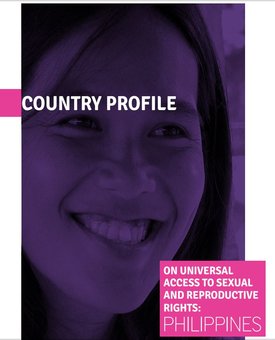country profile on universal access to sexual and reproductive rights: philippines
For purposes of this paper, sexual and reproductive rights (SRR) will be defined by two key concepts: the right to make decisions on reproduction and sexuality free from discrimination, coercion and violence; and the right to the highest standard of sexual and reproductive health (RH). The concepts are derived from paragraph 7.3 of the International Conference on Population and Development’s Programme of Action (UN, 1994) and paragraph 96 of the Beijing Platform for Action (UN, 1995).
The Philippines is signatory to many human rights instruments that are the basis of sexual and reproductive rights, such as the International Covenant on Civil and Political Rights; the International Covenant on Economic, Social and Cultural Rights; the Convention on the Elimination of all Forms of Discrimination Against Women; the Convention on the Rights of the Child; the International Conference on Population and Development Programme of Action; the World Conference of Women Platform for Action; and the UN General Assembly Special Session’s Declaration of Commitment on HIV/AIDS. The UN Development Programme in 2010 assessed that gender equality in the Philippines was “well advanced” with over a hundred laws on women and women’s rights.
However, Philippine laws and policies have not yet fully enshrined sexual and reproductive rights. One of the biggest obstacles to sexual and reproductive rights in the Philippines is the Catholic hierarchy and its doctrines against abortion, contraception, divorce, adolescent sexuality, and LGBT rights
Share:

